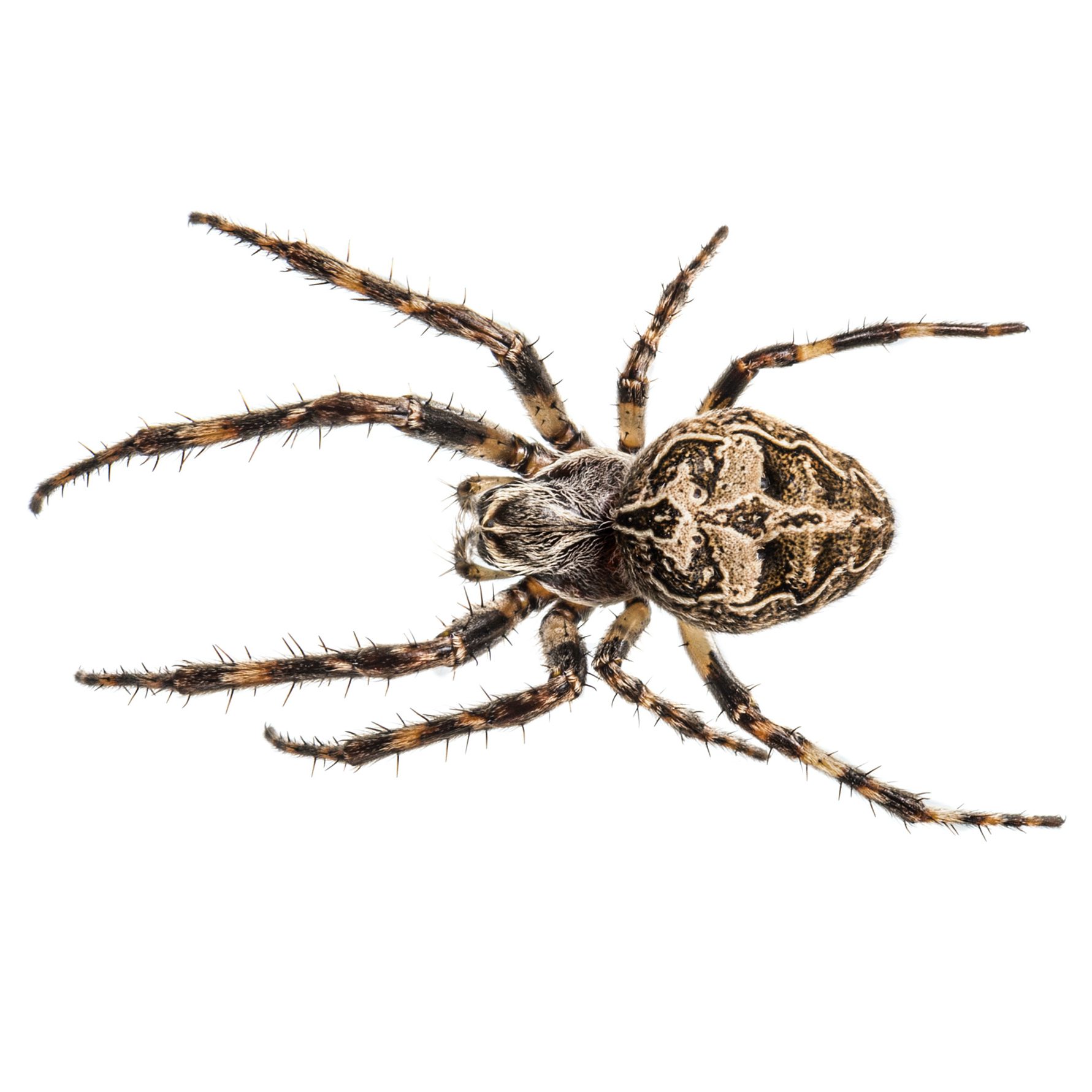De-Webbing Services
Call, or text us if you have any concerns about spiders.
We’re more than happy to help
Speak With An ExpertSafe & Effective Methods
Friendly & Professional
We Practice Eco-Friendly Spider Control
CONTROLLING SPIDER POPULATIONS
By controlling the populations of these prey insects, you can reduce the food source for spiders and make your home less attractive to them. This is where routine pest control applications come in.
Speak With An ExpertExpect The Following
Exclusion
Structure Alteration
Routine Exterior Applications
Routine Spider Control Applications
In addition to reducing the food source for spiders, routine pest control applications can also help to prevent spider infestations by treating the areas where spiders are likely to build their webs, such as cracks and crevices in walls and ceilings, and around windows and doors.
Spider Exclusions
In addition to routine treatments, sealing up cracks and crevices around the exterior of your home’s siding and foundation is a great way to minimize spiders and other pests from entering your home.
Spider Clean-Outs
Additional steps to reduce spiders in your home
In addition to spider-targeted treatments, sealing up cracks/crevices around the foundation and siding of your home where they may enter is another important action to reduce spider activity indoors. Lastly, reducing clutter and leaf buildup around the house will also make your home less attractive to spiders.
Spiders We Commonly See
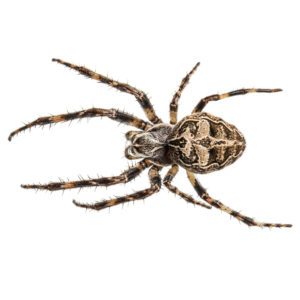
In Massachusetts, garden spiders (Araneus diadematus) add their intricate beauty to the natural tapestry of the state’s gardens and open spaces.
These charismatic arachnids, also known as cross spiders, are known for their striking appearance and impressive web-building skills.
Appearance – With a body length of about half an inch to an inch, their vibrant coloration varies from yellow to orange-brown, adorned with a distinctive white cross pattern on their abdomens.
Habitat – Found in meadows, woodlands, and even urban areas, these spiders construct large orb webs, intricately woven with radial and spiral threads.
Their webs serve as effective traps, capturing small insects that unwittingly stumble into their sticky silken strands.
These helpful predators play an essential role in controlling local insect populations, making them beneficial inhabitants of Massachusetts’ diverse ecosystems.
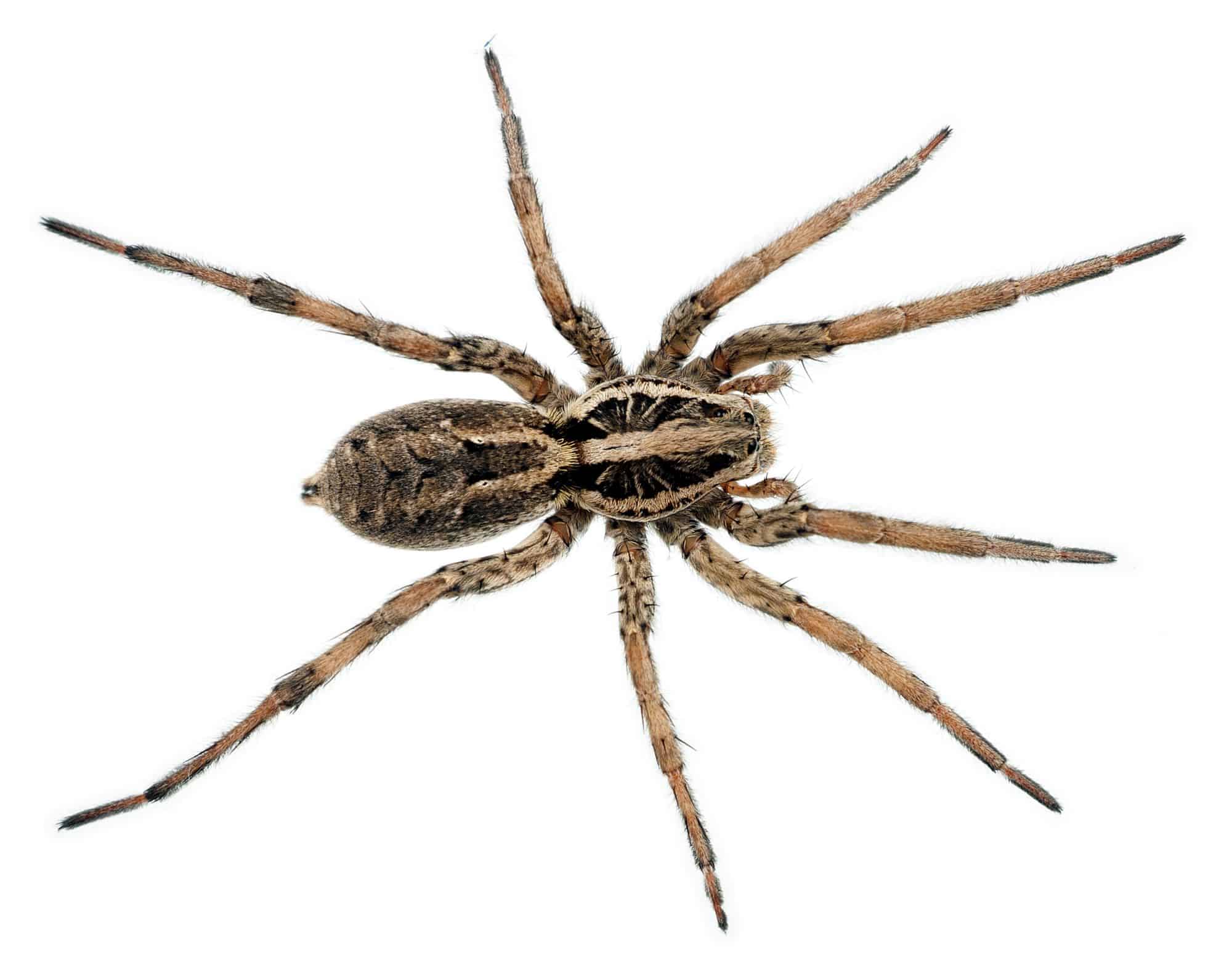
Wolf spiders, belonging to the Lycosidae family, are a diverse group of arachnids known for their hunting prowess and unique behaviors.
Habitat – Found in various parts of the world, these spiders inhabit a wide range of habitats, from forests and grasslands to deserts and urban environments. They are ground-dwelling spiders and can often be seen scurrying across the ground, thanks to their excellent eyesight and agility.
Diet – Wolf spiders are active hunters, preying on various insects and other small arthropods. They use their powerful legs to chase down their prey and deliver a venomous bite to immobilize them. Unlike many other spiders, wolf spiders do not spin elaborate webs to catch their food; instead, they rely on their speed and keen senses to capture their meals.
Appearance – In terms of appearance, wolf spiders have robust bodies with two large eyes at the front, giving them excellent binocular vision. Additionally, they possess six smaller eyes in two rows, enhancing their ability to detect movement and perceive their surroundings. Their coloration and markings can vary, but many species have a mottled or striped pattern that provides effective camouflage in their natural environments.
With their fascinating hunting techniques and widespread presence, wolf spiders play an essential role in controlling insect populations and maintaining ecological balance in various ecosystems.
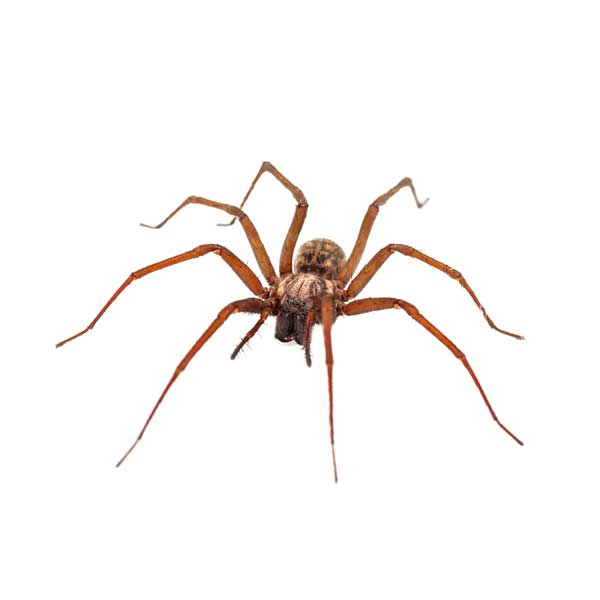
Common house spiders, as their name suggests, are a ubiquitous sight in households around the world. These arachnids are part of the family Araneidae and are well-adapted to indoor living. They typically spin their webs in corners, ceilings, and undisturbed areas of homes, making them a familiar resident in human habitation.
Habitat – Their primary habitat includes rooms, attics, basements, and garages where they find ample shelter and food sources.
Diet – As opportunistic predators, common house spiders have a varied diet, preying on small insects like flies, mosquitoes, and other pests that enter homes. They rely on their silk-spinning abilities to construct intricate webs that serve as traps for catching their unsuspecting prey.
Appearance – In terms of appearance, common house spiders are generally small to medium-sized, with an elongated body divided into two segments: the cephalothorax and abdomen. Many species have a brown or gray coloration, often featuring distinctive markings and patterns on their bodies and legs. Though harmless to humans, their presence can sometimes cause discomfort or anxiety in people with arachnophobia. Nevertheless, common house spiders play a valuable role in controlling insect populations, helping to keep households relatively pest-free.
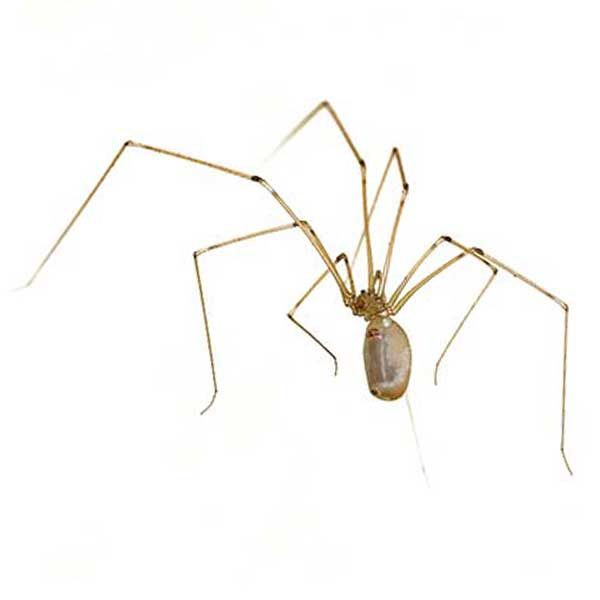
Cellar spiders, also known as daddy long-legs spiders, belong to the Pholcidae family and are recognized for their long, delicate legs and unique appearance.
Habitat – These arachnids are commonly found in indoor and outdoor environments across the globe, making them a widespread species. Their name “cellar spiders” is derived from their preference for dark and damp spaces, such as cellars, basements, and crawl spaces, where they often construct their irregular webs. They are also known to inhabit nooks and crannies, corners of ceilings, and undisturbed areas in homes and buildings. Despite their somewhat intimidating appearance, cellar spiders are harmless to humans and are not venomous.
Diet – Their diet mainly consists of small insects like flies, mosquitoes, and ants, which they capture in their tangled webs.
Appearance – The legs of cellar spiders are extremely long and thin, sometimes exceeding several times their body length, giving them a distinctive and spindly appearance. This unique feature allows them to navigate their webs with great agility and sensitivity, enabling them to detect even the slightest vibrations caused by potential prey.
Although cellar spiders may initially cause unease, they are beneficial arachnids that contribute to controlling insect populations and maintaining ecological balance in their respective habitats.
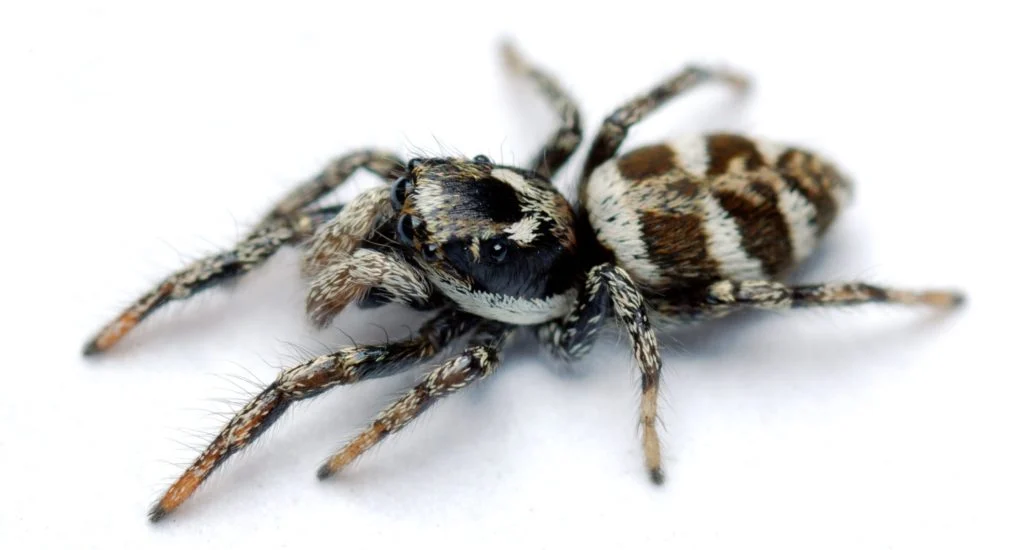
Jumping spiders, members of the Salticidae family, are a fascinating group of arachnids known for their exceptional jumping abilities and distinctive behaviors. With over 6,000 species found worldwide, they constitute one of the largest spider families.
Habitats – These remarkable spiders are commonly encountered in various habitats, including gardens, forests, grasslands, and even urban environments.
Diet – Unlike many other spiders that rely on silk to catch prey, jumping spiders are active hunters. They stalk their prey, relying on keen eyesight and excellent vision to detect movement and accurately judge distances. Their diet primarily consists of small insects like flies, beetles, and other arthropods. When ready to strike, jumping spiders use their powerful leg muscles to leap long distances and capture their prey with precision.
Appearance – Their appearance can vary significantly among species, but most jumping spiders are characterized by their compact body shape, eight eyes (two of which are unusually large and positioned at the front), and vibrant colors or patterns that often help them blend in with their surroundings. With their inquisitive nature and impressive acrobatics, jumping spiders have captivated the curiosity of nature enthusiasts and researchers alike. Their intriguing behaviors and ecological significance make them a notable and essential component of the arachnid world.
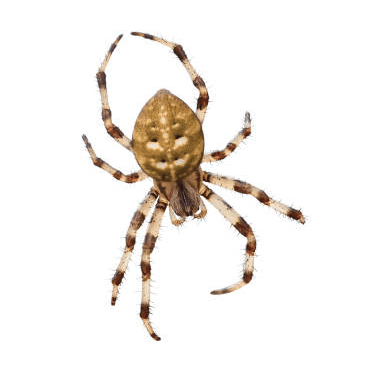
Orb weaver spiders, members of the Araneidae family, are a diverse group of arachnids known for their intricate and impressive orb-shaped webs.
Habitats – With over 3,000 species distributed across the globe, they have adapted to a wide range of habitats, including forests, gardens, meadows, and wetlands. These skilled web builders are most active during the warmer months, constructing their large, circular webs to catch flying insects like flies, moths, and mosquitoes.
Diet – Their diet primarily consists of these insects, which they immobilize with silk and venom before consuming. Orb weaver spiders are renowned for their precision in web construction, and each species has its unique web design and positioning.
Appearance – Their appearance varies, but they typically have a rounded abdomen and long legs, which aid them in traversing and maintaining their webs. Many orb weavers have striking color patterns and may exhibit sexual dimorphism, with females being larger and more brightly colored than males. Despite their formidable appearance, orb weaver spiders are generally harmless to humans and contribute significantly to pest control by keeping insect populations in check. Their sophisticated web-spinning abilities and essential ecological roles make them an intriguing and valuable part of the natural world.
